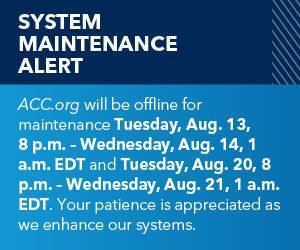Trends in Ambulatory Follow-Up After CV Hospitalizations
Quick Takes
- Improvements in follow-up care after hospitalization for AMI or HF were observed. However, nearly 40% of patients with AMI and >50% of patients with HF were not seen by a cardiology clinician, and nearly 20% of patients with AMI and 30% of patients with HF were not seen by any primary care or cardiology clinician within 30 days of discharge.
- Disparities in follow-up rates improved for females and rural patients.
- Worsening disparities in follow-up were observed for Asian, Black, Hispanic, and Medicaid dual-eligible patients, as well as patients residing in counties with higher levels of social deprivation.
Study Questions:
What are the trends in follow-up after acute myocardial infarction (AMI) and heart failure (HF) hospitalization?
Methods:
Data from Centers for Medicare & Medicaid Services (CMS) administrative inpatient and outpatient claims between 2010 and 2019 were used for the present analysis. Admissions for AMI and HF were identified using International Classification of Diseases codes. Claims where the patient died or was discharged to hospice were excluded. The primary outcome of interest was the receipt of a cardiology visit within 30 days of discharge. Receipt of an ambulatory visit with either a primary care physician (PCP) or cardiologist within 30 days was also defined as an outcome. Multivariable logistic regression models were used to estimate changes over time across five sociodemographic characteristics (sex, race/ethnicity, Medicaid dual eligibility, county-level social deprivation index, and rurality).
Results:
There were 1,678,088 Medicare fee-for-service hospitalizations for AMI and 4,245,665 hospitalizations for HF included in the present study. Between 2010 and 2019, the rate of cardiology follow-up within 30 days of discharge from an AMI hospitalization increased from 48.3% to 61.4%, and rates of follow-up for either PCP or cardiology increased from 70.6% to 79.7%. For HF hospitalization, rates of cardiology follow-up increased from 35.2% to 48.3%, and rates of either PCP or cardiology increased from 64.0% to 71.2%. Throughout the study period, more patients with HF were seen by primary care than by cardiology.
After adjusting for case mix, predicted probabilities of cardiology follow-up after AMI hospitalization increased for all demographic and socioeconomic groups between 2010 and 2019. The disparity in follow-up narrowed modestly for female patients compared with male patients and rural patients compared with urban patients. Disparities worsened for Hispanic patients. Differences for Asian, Black, and Medicaid dual-eligible patients, as well as patients residing in counties with higher levels of social deprivation, were similar in 2010 and 2019. By 2019, the largest disparities were between Black patients compared with White patients (51.9% vs. 59.8%) and Medicaid dual-eligible and non–dual-eligible patients (52.8% vs. 60.4%).
Predicted probabilities of cardiology follow-up after HF hospitalization increased for all demographic and socioeconomic groups, and disparities for female and rural patients similarly narrowed. Disparities were larger for Asian or Pacific Islander, Black, and Hispanic patients and worsened from 2010 to 2019. Disparities also worsened for Medicaid dual-eligible patients as well as patients residing in counties with higher levels of social deprivation. By 2019, the largest disparities were between Black and White patients (39.8% vs. 48.7%) and Medicaid dual-eligible and non–dual–eligible patients (39.7% vs. 49.4%). Trends were largely similar for the secondary outcome of 30-day cardiology or primary care follow-up, although disparities for rural patients were not observed in 2019.
Conclusions:
The authors report that equity-informed policy and health system strategies are needed to further reduce gaps in follow-up care for patients with AMI and patients with HF.
Perspective:
Although improvements in rates of 30-day follow-up were observed, disparities were clear, including worsening of these disparities from several racial/ethnic groups and patients residing in areas with higher levels of social deprivation. These data support the need for continued system-based efforts to ensure timely follow-up for all patients discharged after hospitalization for AMI or HF.
Clinical Topics: Prevention
Keywords: Ambulatory Care, Healthcare Disparities
< Back to Listings

